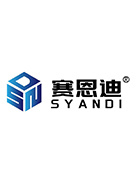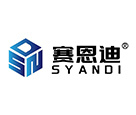
Achieving Perfection: Precision Machining Techniques for Success
项目类型:
应用区域:
使用产品:
安装型号:
Achieving Perfection: Precision Machining Techniques for Success
Table of Contents
- 1. Introduction to Precision Machining
- 2. The Importance of Precision Machining in Manufacturing
- 3. Key Techniques in Precision Machining
- 3.1 CNC Machining: The Backbone of Precision
- 3.2 Electrical Discharge Machining (EDM)
- 3.3 Precision Milling Techniques
- 3.4 Precision Turning for High Tolerance
- 4. Choosing the Right Materials for Precision Machining
- 5. Quality Control in Precision Machining
- 6. Common Mistakes to Avoid in Precision Machining
- 7. Future Trends in Precision Machining
- 8. Frequently Asked Questions
- 9. Conclusion
1. Introduction to Precision Machining
Precision machining is a crucial aspect of modern manufacturing, focusing on the creation of parts and components with high accuracy and tight tolerances. This technique utilizes various advanced machinery and tools to produce intricate designs that meet exact specifications. As industries continue to evolve, the demand for precision in machining has heightened, making it essential for manufacturers to adopt the latest technologies and methodologies to maintain a competitive edge.
2. The Importance of Precision Machining in Manufacturing
The significance of precision machining cannot be overstated. In industries such as aerospace, automotive, and medical devices, components must adhere to strict tolerances to ensure functionality and safety. **Precision machining** enhances the overall quality of products, reduces waste, and improves efficiency in production. By investing in precision machining techniques, companies can achieve better performance and reliability, ultimately leading to increased customer satisfaction.
3. Key Techniques in Precision Machining
To excel in precision machining, it is essential to understand various techniques that contribute to producing high-quality components. This section explores some of the most effective methods used in the industry today.
3.1 CNC Machining: The Backbone of Precision
**CNC (Computer Numerical Control) machining** represents one of the most significant advancements in precision machining. This technology allows for automated control of machining tools, leading to unparalleled accuracy and repeatability. CNC machines operate based on coded instructions, which can be programmed to achieve intricate shapes and designs. The benefits of CNC machining include:
- **High precision**: CNC machines can produce components with tolerances as tight as ±0.001 inches.
- **Consistency**: Once programmed, CNC machines consistently replicate the same specifications.
- **Versatility**: CNC machining can be applied to various materials, including metals, plastics, and composites.
3.2 Electrical Discharge Machining (EDM)
**Electrical Discharge Machining (EDM)** is another precision technique that utilizes electrical discharges to remove material from a workpiece. EDM is particularly effective for creating complex shapes and intricate details, especially in hard materials. Key advantages of EDM include:
- **Ability to machine hard materials**: EDM can efficiently work with materials that are difficult to machine with traditional methods.
- **Precision in intricate designs**: Ideal for applications like mold making and die sinking, EDM can achieve high levels of detail.
3.3 Precision Milling Techniques
**Precision milling** is a machining process that involves cutting material with rotating tools to achieve flat surfaces, grooves, and complex shapes. This method is essential for producing parts that require high levels of detail and surface finish. Techniques in precision milling include:
- **Face milling**: Involves cutting flat surfaces and features on the workpiece.
- **Slot milling**: Used for creating slots and grooves in various materials.
- **Profile milling**: Focuses on producing complex profiles and contours.
3.4 Precision Turning for High Tolerance
**Precision turning** is a process where a workpiece rotates while a cutting tool removes material to shape the component. This technique is particularly effective for cylindrical parts, such as shafts and fittings. The main benefits of precision turning include:
- **High accuracy**: Capable of producing parts with tight tolerances and smooth finishes.
- **Efficiency**: Turning operations can be highly automated, reducing production time.
4. Choosing the Right Materials for Precision Machining
Selecting the appropriate materials is critical in precision machining, as it directly influences the performance and quality of the final product. Common materials used in precision machining include:
- **Aluminum**: Known for its lightweight and corrosion resistance, aluminum is often used in aerospace and automotive applications.
- **Stainless Steel**: Offers excellent strength and corrosion resistance, making it suitable for medical and food processing equipment.
- **Titanium**: Renowned for its high strength-to-weight ratio, titanium is frequently used in aerospace and military applications.
When choosing materials, it is essential to consider factors such as machinability, strength, and the specific requirements of the application.
5. Quality Control in Precision Machining
Implementing effective quality control measures is vital to achieving and maintaining precision in machining processes. Quality control ensures that components meet the required specifications and tolerances. Key steps in the quality control process include:
- **Regular inspections**: Conducting periodic checks of machined parts to verify dimensions and surface finish.
- **Use of precision measuring instruments**: Utilizing tools such as calipers, micrometers, and coordinate measuring machines (CMM) to ensure accuracy.
- **Documentation and analysis**: Keeping detailed records of inspection results and analyzing trends to identify areas for improvement.
6. Common Mistakes to Avoid in Precision Machining
While striving for perfection in precision machining, it is crucial to be aware of common pitfalls that can compromise quality. Here are some mistakes to avoid:
- **Ignoring setup procedures**: Proper setup of machines and tools is essential for achieving accurate results. Rushing through setup can lead to errors.
- **Neglecting maintenance**: Failing to maintain machines can result in decreased performance and quality. Regular maintenance schedules are vital.
- **Inadequate training**: Ensuring that operators are adequately trained in precision machining techniques is crucial for achieving optimal results.
7. Future Trends in Precision Machining
The landscape of precision machining is continuously evolving, driven by advancements in technology and changing industry demands. Some emerging trends include:
- **Additive manufacturing**: The integration of 3D printing technology allows for the creation of complex geometries that were previously difficult to achieve.
- **Automation and robotics**: Increasing automation in machining processes enhances efficiency and reduces human error.
- **Advanced materials**: The development of new materials, such as composites and high-performance alloys, opens new possibilities for precision machining applications.
8. Frequently Asked Questions
What is precision machining?
Precision machining is a manufacturing process that involves the removal of material from a workpiece to create components with high accuracy and tight tolerances.
What industries rely on precision machining?
Industries such as aerospace, automotive, medical devices, and electronics heavily rely on precision machining for producing high-quality components.
What are the benefits of CNC machining?
CNC machining offers high precision, consistency, and versatility, making it an essential technique for modern manufacturing.
How do I ensure quality in precision machining?
Implementing effective quality control measures, conducting regular inspections, and using precision measuring instruments are crucial for ensuring quality.
What common materials are used in precision machining?
Common materials include aluminum, stainless steel, and titanium, each chosen for their unique properties that suit specific applications.
9. Conclusion
In conclusion, achieving perfection in precision machining requires a comprehensive understanding of various techniques, materials, and quality control measures. By adopting advanced technologies such as CNC machining and EDM, manufacturers can produce high-quality components that meet the stringent demands of various industries. It is imperative to avoid common mistakes and stay abreast of future trends to maintain competitiveness in the evolving landscape of precision machining. Embrace these techniques and practices to ensure success in your machining operations, leading to enhanced quality, efficiency, and customer satisfaction.
Summary:
Achieving Perfection: Precision Machining Techniques for Success Table of Contents 1. Introduction to Precision Machining 2. The Importance of Precision Machining in Manufacturing 3. Key Techniques in Precision Machining 3.1 CNC Machining: The Backbone of Precision 3.2 Electrical Discharge Machining (EDM) 3.3 Precision Milling Techniques 3.4 Precision Turning fo
Author:
Source:
Date:
2025-07-10
Other information





